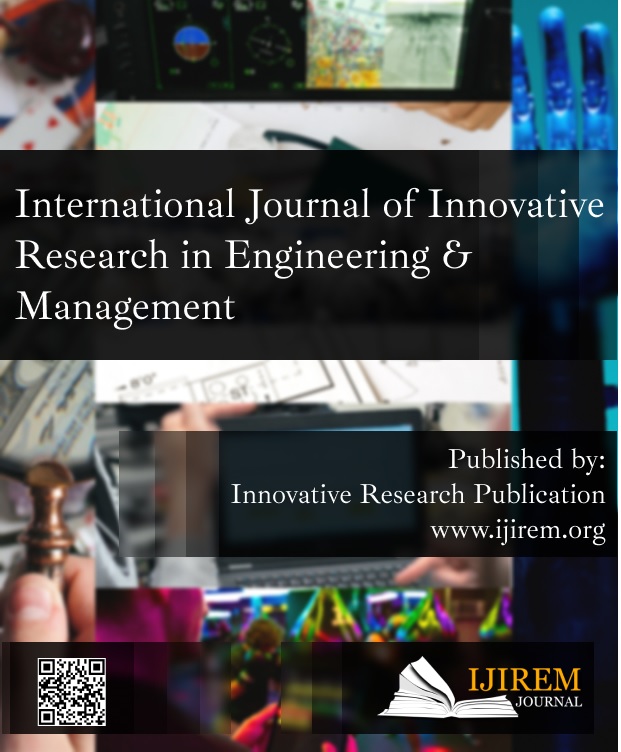A Review on Systematic Investment Plan (SIP)
Keywords:
Investment, Mutual fund, Portfolio, Systematic investment plansAbstract
SIPs (systematic investment plans) have developed as an different venture proposal for a significant figure of individuals seeking high earnings while minimizing threat via instalment payments. The goal of this research is to determine the motivating reason for investing in a systematic investment plan as well as the flaws in this scheme. For the purpose of the research, a taster of 100 defendants who are SIP holders from Gandhinagar, Gujarat, was selected. Using the questionnaire technique, data was gathered from primary sources. Various statistical techniques were used to analyze the data collected. The examination showed that financial backers are inspired to participate in deliberate growth strategies for better gets back with lower hazard, however information and functional stage is one of the significant obstructions that financial backers face. The issue of shared asset choice by contributing the mystery' becoming quite wealthy' and high potential return assets among values based common finances SIP (enormous cap, little and mid cap, broadened value, topical infra, ELSS, and so forth) keeps on being researched. Hypothetical supposition that will be that for people who don't have a single amount add up to contribute, the Systematic Investment Plan is the best strategy to create financial momentum after some time since the danger is limited while putting resources into long haul value based shared assets SIP.
Downloads
References
X. Qian, “Small investor sentiment, differences of opinion and stock overvaluation,” J. Financ. Mark., 2014.
P. Marmora and O. Rytchkov, “Learning about noise,” J. Bank. Financ., 2018.
A. Srivastava, V. Rastogi, and R. Rastogi, “Improve children health - Best investment for better tomorrow,” J. Int. Med. Sci. Acad., 2017.
S. Jain, V. Jain, and S. Das, “Relationship analysis between emotional intelligence and service quality with special evidences from Indian banking sector,” Espacios, 2018.
J. B. Berk and J. H. van Binsbergen, “Measuring skill in the mutual fund industry,” J. financ. econ., 2015. [6] SEBI, “Securities and Exchange Board of India,” Draft Secur. Exch. Board India (Issue List. Debt Secur. Regul. 2008, 2017.
R. Sood and M. Kalia, “Cloudbank: A secure anonymous banking cloud,” in Communications in Computer and Information Science, 2010.
N. Boso, A. Danso, C. Leonidou, M. Uddin, O. Adeola, and M. Hultman, “Does financial resource slack drive sustainability expenditure in developing economy small and medium-sized enterprises?,” J. Bus. Res., 2017.
R. Zenti, “Are Lump Sum Investments Riskier than Systematic Investment Plans? Some Empirical Evidence,” SSRN Electron. J., 2013.
S. W. Wu, J. Dutta, and C. Y. Huang, “The systematic biases in decision-making in the mutual-fund markets: Market states and disposition effect,” Cogent Econ. Financ., 2018.
I. Melih Tas, B. G. Unsalver, and S. Baktir, “A Novel SIP Based Distributed Reflection Denial-of-Service Attack and an Effective Defense Mechanism,” IEEE Access, 2020.
S. Hussain, A. Singh, A. Habib, M. S. Hussain, and A. K. Najmi, “Comment on: ‘Cost Effectiveness of Dialysis Modalities: A Systematic Review of Economic Evaluations,’” Applied Health Economics and Health Policy. 2019.
F. Qureshi, I. Ismail, and S. G. Chan, “Mutual funds and market performance: New evidence from ASEAN markets,” Invest. Anal. J., 2017.
N. Trivedi et al., “Pharmacoeconomics: A pivotal role in indian healthcare system (A Review),” Pharma Research. 2014.
S. Kathpal and M. I. Siddiquei, “Investigating the impact of covid-19 on investor’s bias: An empirical study,” Financ. India, 2021.
M. I. Tabash, M. A. Albugami, M. Salim, and A. Akhtar, “Service quality dimensions of E-retailing of Islamic banks and its impact on customer satisfaction: An empirical investigation of Kingdom of Saudi Arabia,” J. Asian Financ. Econ. Bus., 2019.
Z. Chen, D. Forsberg, and D. R. Gallagher, “Which
institutional investor types are the most informed?,” Account. Financ., 2019.
M. S. Solanki, L. Goswami, K. P. Sharma, and R. Sikka, “Automatic Detection of Temples in consumer Images using histogram of Gradient,” in Proceedings of 2019 International Conference on Computational Intelligence and Knowledge Economy, ICCIKE 2019, 2019.
M. Dadhich, M. S. Pahwa, V. Jain, and R. Doshi, “Predictive Models for Stock Market Index Using Stochastic Time Series ARIMA Modeling in Emerging Economy,” in Lecture Notes in Mechanical Engineering, 2021.
S. M. Adhav, “Comparative Study of Selected Sector Equity Mutual Funds.,” Khoj J. Indian Manag. Res. Pract., 2016.
S. K. Mangla et al., “A framework to assess the challenges to food safety initiatives in an emerging economy,” J. Clean. Prod., 2021.
I. Mergel, “OpenCollaboration in Public Sector: The case of social codign on Github,” Gov. Inf. Q., 2012. [23] G. Stobbe, Just Enough ENGLISH GRAMMAR. 2013. [24] I. A. Wani, I. M. Sheikh, T. Maqbool, and V. Kumar, “Experimental investigation on using plastic wastes to enhance several engineering properties of soil through stabilization,” in Materials Today: Proceedings, 2021. [25] T. Singh and G. S. Sikarwar, “The Influence of Investor Psychology on Regret Aversion,” Glob. J. Manag. Bus. Res. C Financ., 2015.
